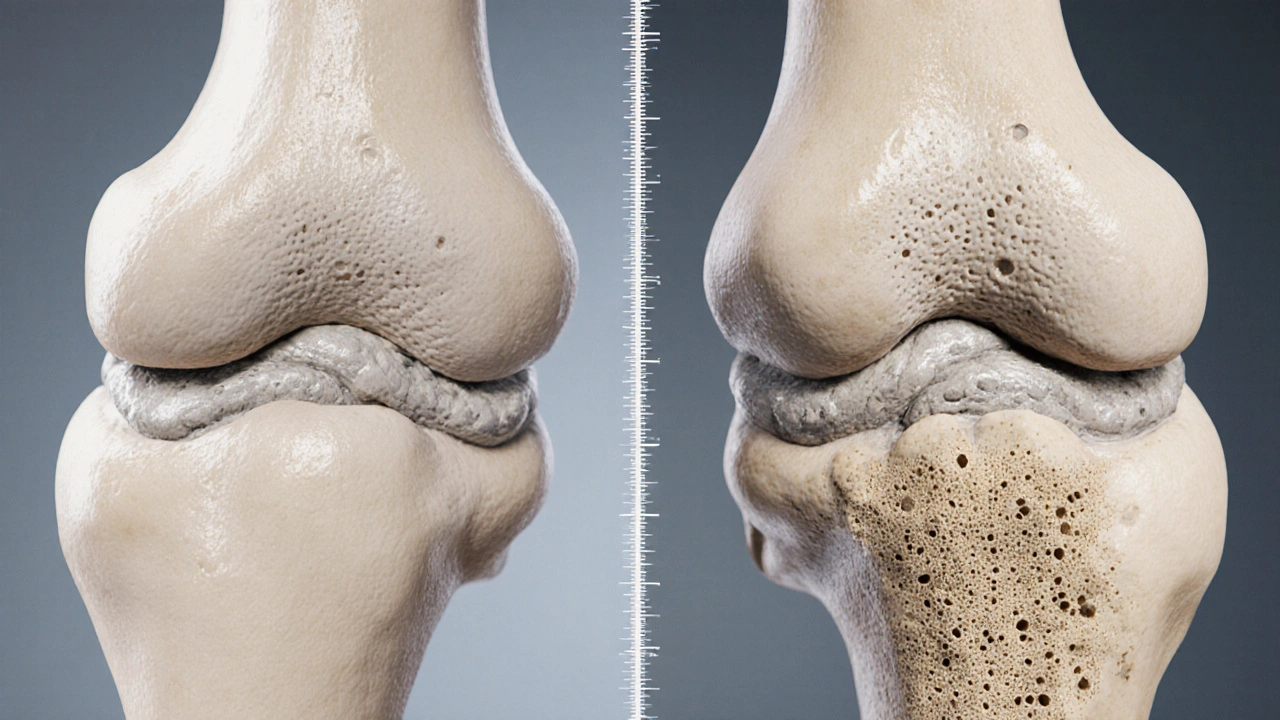How to Safely Dispose of Chemotherapy Medication at Home
Nov 19 2025 - Health and Pharmaceuticals
When talking about osteoporosis, a condition where bones become fragile and break easily. Also known as bone loss disease, it develops over years and is shaped by a mix of biology and lifestyle choices. Understanding the osteoporosis risk factors helps you spot trouble early and act before a fracture happens.
One of the biggest contributors is calcium deficiency, not getting enough calcium from diet or supplements. Without adequate calcium, the body pulls the mineral from bone, weakening the structure. Another key player is the bone mineral density test, a scan that measures bone strength and flags early loss. Regular testing catches trouble before a break, turning a silent problem into a manageable one. Hormonal shifts, especially reduced estrogen after menopause, also tip the balance; hormone therapy, medications that replace lost estrogen can slow bone loss for many women.
Beyond what your genes hand you, habits matter. Smoking accelerates bone breakdown by reducing blood flow, while excessive alcohol interferes with calcium absorption. Weight‑bearing exercise – like walking, jogging, or resistance training – sends signals to bone cells to build strength, effectively counteracting age‑related loss. A diet rich in vitamin D, magnesium, and protein supports calcium use and bone remodeling. Even a modest daily grind of 30 minutes can make a measurable difference in bone density over a few years.
Medication use is a double‑edged sword. Long‑term steroids, certain anti‑seizure drugs, and some cancer treatments raise fracture risk by disturbing the bone remodeling cycle. If you’re on such meds, discuss bone‑protecting strategies with your doctor. Lifestyle tweaks, such as adding calcium‑rich foods (dairy, leafy greens, fortified plant milks) and getting safe sun exposure for vitamin D, are low‑effort steps that pay off in stronger bones.
Putting all these pieces together, you’ll see how each factor – nutrition, hormones, lifestyle, and medical history – weaves into the bigger picture of osteoporosis risk. Below you’ll find a curated set of articles that dig deeper into each of these areas, from how to choose the right supplement to practical exercise plans and guidelines for monitoring bone health. Use them as a toolbox to lower your risk and keep your skeleton sturdy for the years ahead.

Learn what osteoporosis is, its main causes, hidden symptoms, key risk factors, and practical steps to prevent and manage the disease for healthier bones.
read more© 2025. All rights reserved.
